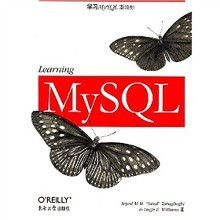Summarize the usage of sql statement skills and examples
This article focuses on sorting out the tips for executing sql. This method not only brings convenience in operation, but also ensures the security of data. 1: Query data (guarantee query performance) First, I would like to explain the performance of SELECT * and SELECT t.id, t.name. Conclusion: The performance of the latter is actually better than the former in general. If you don’t believe it, you can test it yourself. When querying, it is best to give the table an alias to facilitate finding the fields to be queried in the table. When executing sql for multi-condition query, use tools such as Navicat to write query sql in the following format: SELECT cus.uuid , cus.customerId FROM `customer` cus where 1=1 and cus.uuid='' --&nb
1. Tips on mysql operation sql

Introduction: This article focuses on organizing tips for executing sql. This method not only brings operational convenience, but also ensures data security.
2. SQL statement skills: cleverly use OR to achieve logical judgment when querying

##Introduction: DECLARE @fieldname varchar(50) DECLARE @fieldvalue nvarchar(100) SET @fieldname='chassisno' --One or none of chassisno, plateno, owner, contacttelno can be passed here Pass SET @fieldvalue='Zuowenjun' IF @fieldname = 'chassisno'
3. MySQL (C API) VC example and code download (1) (2)_PHP tutorial
Introduction: MySQL (C API) VC instance and code download (1) (2). 10. SQL statement skills 1. A SQL statement problem: row and column conversion select * from v_temp The above view results are as follows: user_name role_name ----------------------- -- System Administrator Administrator
4. MySQL (C API) VC instance and code download (1) (2)
Introduction: MySQL (C API) VC instance and code download (1) (2). 10. SQL statement skills 1. A SQL statement problem: row and column conversion select * from v_temp The above view results are as follows: user_name role_name ----------------------- -- System Administrator Administrator
5. SQL statement skills: monthly statistical data
Introduction: SQL Statement skills: Statistics by month
6. SQL statement skills to remove duplicate rows
Introduction: Remove tables If you want to remove duplicate rows of data in a table, you may immediately think of using the DISINTCT keyword, but DISINTCT can only remove rows with the same columns in the table. If you encounter rows that need to remove multiple duplicate fields in the table (ie: part of Same, partially different), so what should we do? Through many years of database writing experience, I have compiled the following methods for your reference
7. SQL statement skills: Query data records that exist in one table but not in another table
Introduction: Method 1 (only applicable to a single field) Use not in, easy to understand, low efficiency select A.ID from A where A.ID not in (select ID from B ) Method 2 (applicable to multiple field matching) Use left join...on..., "B.ID isnull" means select A.ID from A left jo## after the left join in the record where the B.ID field is null. #
The above is the detailed content of Summarize the usage of sql statement skills and examples. For more information, please follow other related articles on the PHP Chinese website!

Hot AI Tools

Undresser.AI Undress
AI-powered app for creating realistic nude photos

AI Clothes Remover
Online AI tool for removing clothes from photos.

Undress AI Tool
Undress images for free

Clothoff.io
AI clothes remover

AI Hentai Generator
Generate AI Hentai for free.

Hot Article

Hot Tools

Notepad++7.3.1
Easy-to-use and free code editor

SublimeText3 Chinese version
Chinese version, very easy to use

Zend Studio 13.0.1
Powerful PHP integrated development environment

Dreamweaver CS6
Visual web development tools

SublimeText3 Mac version
God-level code editing software (SublimeText3)

Hot Topics
 1379
1379
 52
52
 Explain InnoDB Full-Text Search capabilities.
Apr 02, 2025 pm 06:09 PM
Explain InnoDB Full-Text Search capabilities.
Apr 02, 2025 pm 06:09 PM
InnoDB's full-text search capabilities are very powerful, which can significantly improve database query efficiency and ability to process large amounts of text data. 1) InnoDB implements full-text search through inverted indexing, supporting basic and advanced search queries. 2) Use MATCH and AGAINST keywords to search, support Boolean mode and phrase search. 3) Optimization methods include using word segmentation technology, periodic rebuilding of indexes and adjusting cache size to improve performance and accuracy.
 How do you alter a table in MySQL using the ALTER TABLE statement?
Mar 19, 2025 pm 03:51 PM
How do you alter a table in MySQL using the ALTER TABLE statement?
Mar 19, 2025 pm 03:51 PM
The article discusses using MySQL's ALTER TABLE statement to modify tables, including adding/dropping columns, renaming tables/columns, and changing column data types.
 When might a full table scan be faster than using an index in MySQL?
Apr 09, 2025 am 12:05 AM
When might a full table scan be faster than using an index in MySQL?
Apr 09, 2025 am 12:05 AM
Full table scanning may be faster in MySQL than using indexes. Specific cases include: 1) the data volume is small; 2) when the query returns a large amount of data; 3) when the index column is not highly selective; 4) when the complex query. By analyzing query plans, optimizing indexes, avoiding over-index and regularly maintaining tables, you can make the best choices in practical applications.
 Can I install mysql on Windows 7
Apr 08, 2025 pm 03:21 PM
Can I install mysql on Windows 7
Apr 08, 2025 pm 03:21 PM
Yes, MySQL can be installed on Windows 7, and although Microsoft has stopped supporting Windows 7, MySQL is still compatible with it. However, the following points should be noted during the installation process: Download the MySQL installer for Windows. Select the appropriate version of MySQL (community or enterprise). Select the appropriate installation directory and character set during the installation process. Set the root user password and keep it properly. Connect to the database for testing. Note the compatibility and security issues on Windows 7, and it is recommended to upgrade to a supported operating system.
 How do I configure SSL/TLS encryption for MySQL connections?
Mar 18, 2025 pm 12:01 PM
How do I configure SSL/TLS encryption for MySQL connections?
Mar 18, 2025 pm 12:01 PM
Article discusses configuring SSL/TLS encryption for MySQL, including certificate generation and verification. Main issue is using self-signed certificates' security implications.[Character count: 159]
 What are some popular MySQL GUI tools (e.g., MySQL Workbench, phpMyAdmin)?
Mar 21, 2025 pm 06:28 PM
What are some popular MySQL GUI tools (e.g., MySQL Workbench, phpMyAdmin)?
Mar 21, 2025 pm 06:28 PM
Article discusses popular MySQL GUI tools like MySQL Workbench and phpMyAdmin, comparing their features and suitability for beginners and advanced users.[159 characters]
 Difference between clustered index and non-clustered index (secondary index) in InnoDB.
Apr 02, 2025 pm 06:25 PM
Difference between clustered index and non-clustered index (secondary index) in InnoDB.
Apr 02, 2025 pm 06:25 PM
The difference between clustered index and non-clustered index is: 1. Clustered index stores data rows in the index structure, which is suitable for querying by primary key and range. 2. The non-clustered index stores index key values and pointers to data rows, and is suitable for non-primary key column queries.
 How do you handle large datasets in MySQL?
Mar 21, 2025 pm 12:15 PM
How do you handle large datasets in MySQL?
Mar 21, 2025 pm 12:15 PM
Article discusses strategies for handling large datasets in MySQL, including partitioning, sharding, indexing, and query optimization.




